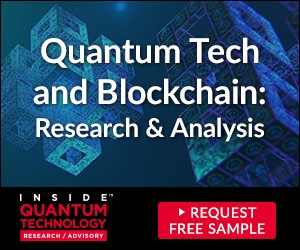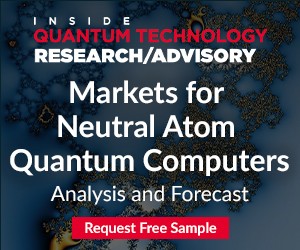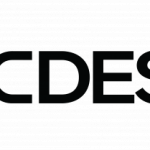Quantum News Briefs June 6: Quantum internet boosted, EU funded (among others), Quantum repeater successfully implemented using trapped ions; China leads tech race, highlighting need for AUKUS sharing, says Australian think-tank; Quantum Science Center members teach, learn at third summer school + MORE

Quantum News Briefs June 6: Quantum internet boosted, EU funded (among others), Quantum repeater successfully implemented using trapped ions; China leads tech race, highlighting need for AUKUS sharing, says Australian think-tank; Quantum Science Center members teach, learn at third summer school + MORE.
Quantum internet boosted, European Union funded (among others), Quantum repeater successfully implemented using trapped ions
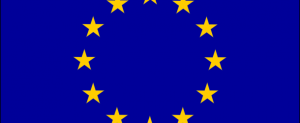 Funded by the European Union among others, the latest research « Telecom-Wavelength Quantum Repeater Node Based on a Trapped-Ion Processor » was recently published in Physical Review Letters.
Funded by the European Union among others, the latest research « Telecom-Wavelength Quantum Repeater Node Based on a Trapped-Ion Processor » was recently published in Physical Review Letters.
Quantum physicists led by Ben Lanyon at the University of Innsbruck have now succeeded in building a quantum repeater node for the standard wavelength of telecommunication networks and transmitted quantum information over tens of kilometres — a fully functioning network node made with two single matter systems enabling entanglement creation with a photon at the standard frequency of the telecommunications network and entanglement swapping operations.
The repeater node consists of two calcium ions captured in an ion trap within an optical resonator as well as single photon conversion to the telecom wavelength.
The scientists thus demonstrated the transfer of quantum information over a 50-kilometer-long optical fiber, with the quantum repeater placed exactly halfway between starting and end point.
The researchers were also able to calculate which improvements of this design would be necessary to make transmission over 800 kilometres possible which would allow to connect Innsbruck to Vienna.
Lanyon’s team is part of the Quantum Internet Alliance under the Quantum Flagship project.
China leads tech race, highlighting need for AUKUS sharing, says Australian think-tank
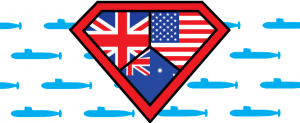 China leads research in 19 of 23 technologies set as priorities by the AUKUS defense partnership of Australia, Britain and the U.S., including hypersonics, electronic warfare and undersea drones, highlighting the need for Western allies to pool research results, an Australian security think-tank says.
China leads research in 19 of 23 technologies set as priorities by the AUKUS defense partnership of Australia, Britain and the U.S., including hypersonics, electronic warfare and undersea drones, highlighting the need for Western allies to pool research results, an Australian security think-tank says.
U.S. defense technology sharing is tightly controlled, and U.S. analysts have previously said bureaucratic hurdles could slow not only a AUKUS nuclear submarine program but also “Pillar Two” – a boost in collaboration between the nations in hypersonic and counter-hypersonic technology, quantum, AI and electronic warfare. Quantum News Briefs summarizes a June 5 article about the AUKUS statements.
The Australian Strategic Policy Institute (ASPI) said on Tuesday its survey of the world’s top science papers showed China led research in most of the technologies likely to come under the defence partnership’s so-called Pillar Two.
ASPI said its analysis of two million science papers showed Beijing had a commanding lead in both hypersonics research and the technology to counter it, electronic warfare and key undersea capabilities. Click here to read the June 5 Reuters article in-entirety.
Quantum Science Center members teach, learn at third summer school
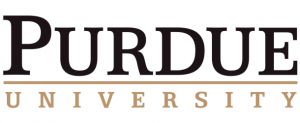 For the third year in a row, the Quantum Science Center held its signature workforce development event: a comprehensive summer school for students and early-career scientists designed to facilitate conversations and hands-on activities related to multiple areas of quantum research.
For the third year in a row, the Quantum Science Center held its signature workforce development event: a comprehensive summer school for students and early-career scientists designed to facilitate conversations and hands-on activities related to multiple areas of quantum research.
The hybrid event featured a packed program at core QSC partner Purdue University, which hosted 140 in-person participants, more than 100 of which were students and postdocs. Hundreds of others attended online via the Purdue Quantum Science and Engineering Institute’s Quantum Coffeehouse YouTube channel, either live or after the school concluded.
QSC Workforce Development Lead and Purdue Professor Alexandra Boltasseva, Purdue Associate Dean for Research and Partnerships Garth Simpson, and QSC Director Travis Humble welcomed speakers and attendees to the school and shared their hopes for the future of quantum and the QSC, a Department of Energy National Quantum Information Science Research Center headquartered at DOE’s Oak Ridge National Laboratory.
“The purpose of the summer school is to highlight QSC research related to the latest developments not only in quantum science and engineering but in machine learning as well,” Boltasseva said. “As we know, these are two ongoing revolutions that are shaping our society.”
Simpson expressed excitement about the next generation of computational architectures and the experts who will use those systems to make new discoveries in fundamental and applied quantum physics. Expanding on this idea, Humble posited that up-and-coming quantum professionals will disseminate information and reimagine research methods to advance national and international R&D priorities.
HSBC and Quantinuum explore real world use cases of Quantum Computing in Financial Services
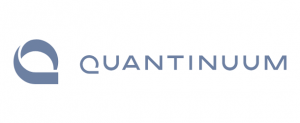

Quantinuum and HSBC announced a series of exploratory projects that exploit the potential near- and long-term benefits of quantum computing for banking with specific projects in cybersecurity, fraud detection, and natural language processing. Quantum News Briefs summarizes May 30 announcement.
Philip Intallura, Global Head of Quantum Technologies at HSBC, said: “We are excited to embark on this partnership with Quantinuum and explore the further applications of Quantum technology in the Financial Services sector. Our collaboration provides us a great opportunity to access cutting-edge quantum hardware and take our use cases to a truly transformational level. We are looking forward to seeing the results of our joint work and bring long-term value to the bank.”
An initial exploration of the multi-stage collaboration is intended to demonstrate the use of quantum computing-hardened cryptographic keys, including uniquely combining them with post-quantum cryptographic algorithms to mitigate current and future cyber threats. This effort to strengthen resiliency against advanced cyber threats is increasingly critical as the transition point between the capabilities of classical and quantum computers continues to approach.
Quantinuum’s Quantum Origin [LINK] is a cutting-edge platform that uses the operations of a quantum computer to strengthen the cryptographic keys that are used to protect transactions and identification processes. Quantum Origin is deployed on existing “classical” cybersecurity infrastructure and is the first commercial product on the market that uses a quantum computer to produce provably unpredictable cryptographic keys, which could offer an extra layer of security to protect HSBC’s most valuable data. HSBC and Quantinuum will run Quantum Origin via an HSM provider. Click here to read the May 30 announcement in-entirety.
Sandra K. Helsel, Ph.D. has been researching and reporting on frontier technologies since 1990. She has her Ph.D. from the University of Arizona.













